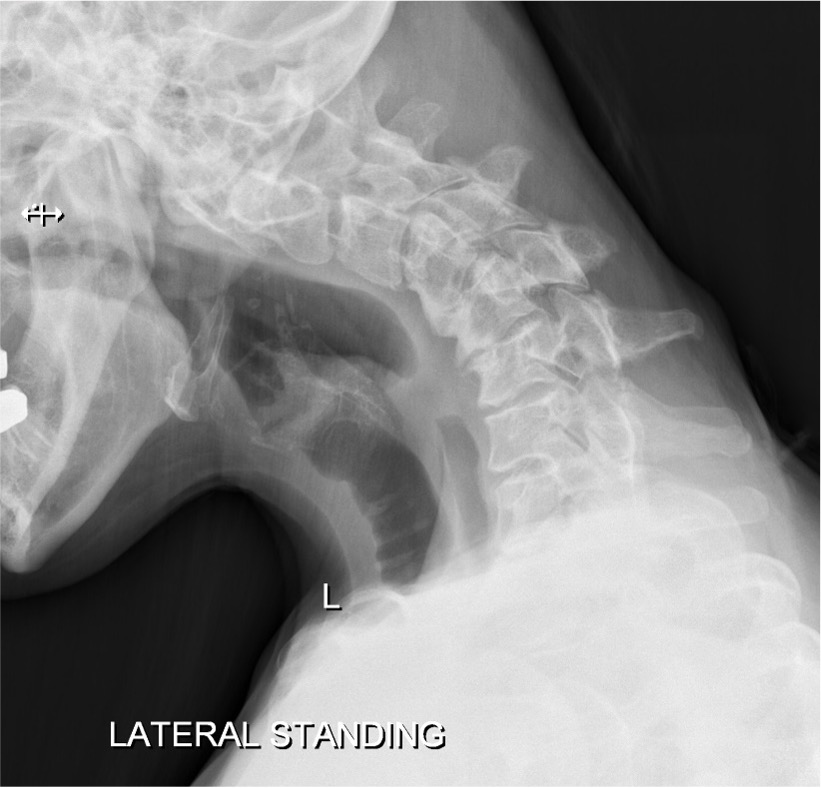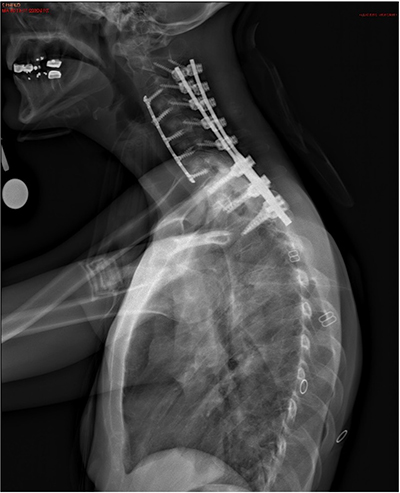

What is adult cervical deformity and what causes it?
Adult cervical deformity is a condition in which there is abnormal alignment of the cervical spine (neck). This can be an abnormal alignment when viewed from the side (“kyphosis”) and/or the front (“scoliosis”). Cervical deformity has a broad range of causes, including degenerative (due to wear and tear), neoplastic (resulting from tumor), traumatic (from a fracture or injury), autoimmune, infections, congenital (abnormalities present from birth), and neuromuscular disease. The most common form of cervical deformity is kyphosis (reversal of the normal C-shaped curve of the neck), which can impact the ability to look upright and maintain “horizontal gaze” and produce neck and arm pain and myelopathy.
What are the symptoms?
Symptoms associated with adult cervical deformity are variable and range from mild or none to significant symptoms that can markedly impact quality of life. Symptoms may include neck and arm pain, myelopathy (spinal cord malfunction), swallowing and breathing difficulties, and loss of horizontal gaze (ability to hold the head upright and look forward).
How is cervical deformity diagnosed?
Cervical deformity is diagnosed based on clinical examination and imaging studies. On clinical examination cervical deformities may be readily apparent based on how a patient is able to hold his or her head upright when viewed from either the front or from the side. Clinic evaluation also includes a neurological examination to assess for myelopathy (spinal cord malfunction) and arm and leg strength and sensation. Imaging studies often include x-rays to assess alignment of the neck and the rest of the spine. Other imaging studies may be obtained if needed to assess the bone anatomy (CT imaging) or the spinal cord and nerves (MRI).
What treatment options are available?
In the absence of significant or progressive weakness or evidence of rapid worsening of deformity or alignment, most patients are encouraged to at least initially pursue a course of non-operative treatments with the hope that these will be sufficient in providing relief. These may include physical therapy, pool therapy, targeted steroid injections, and medications such as gabapentin or NSAIDs.
For patients who do not get satisfactory relief with non-operative treatments, surgery may be an option. Since surgeries for cervical deformity tend to be fairly extensive with long recoveries and relatively high risk of complications, these procedures tend to be saved for those who cannot get sufficient relief with other treatments. The decision of whether to pursue operative treatment for cervical deformity is often very personal. Patients must weigh the risks and benefits and should have an open discussion with their surgeon. The good news is that clinical research studies have shown the potential for surgery to provide significant improvement in pain and function for patients with cervical deformity.
If you or a loved one is suffering from cervical deformity, talk to your surgeon or contact us to set up an appointment.

